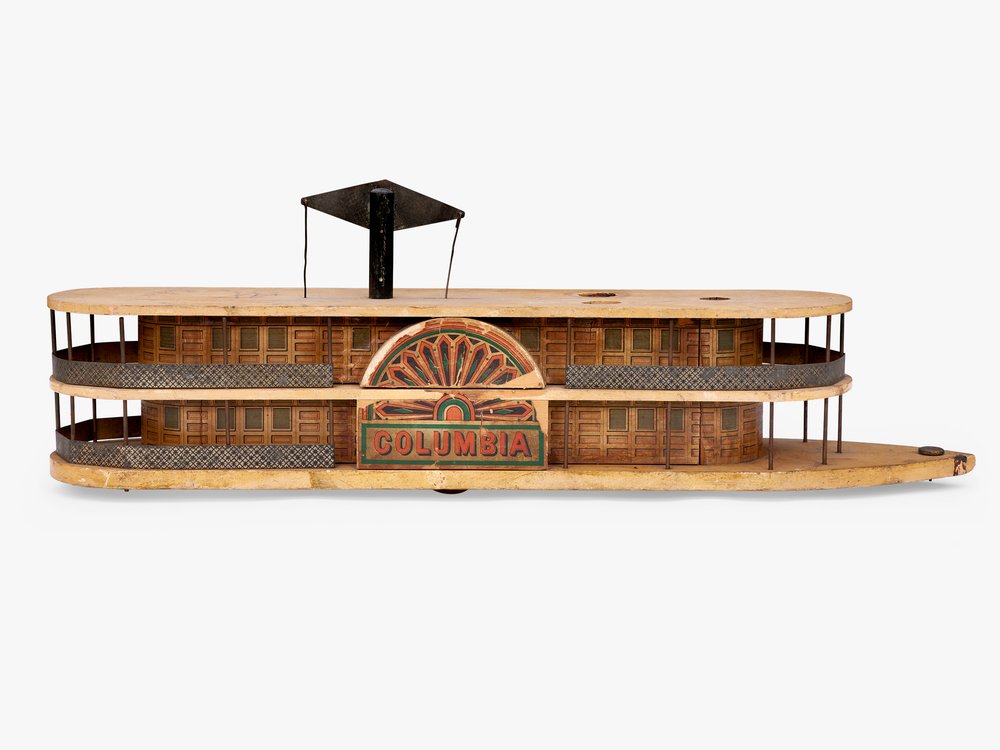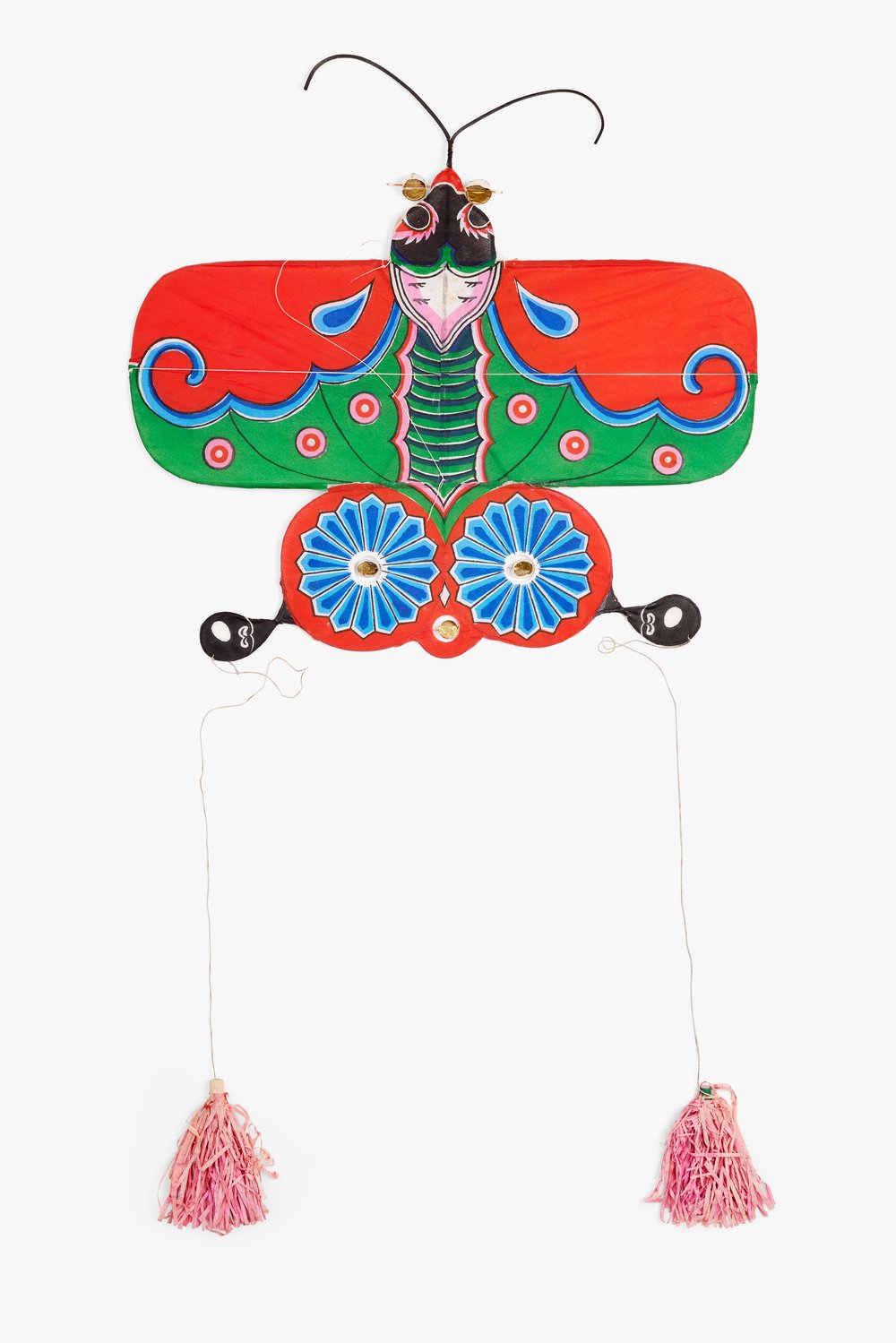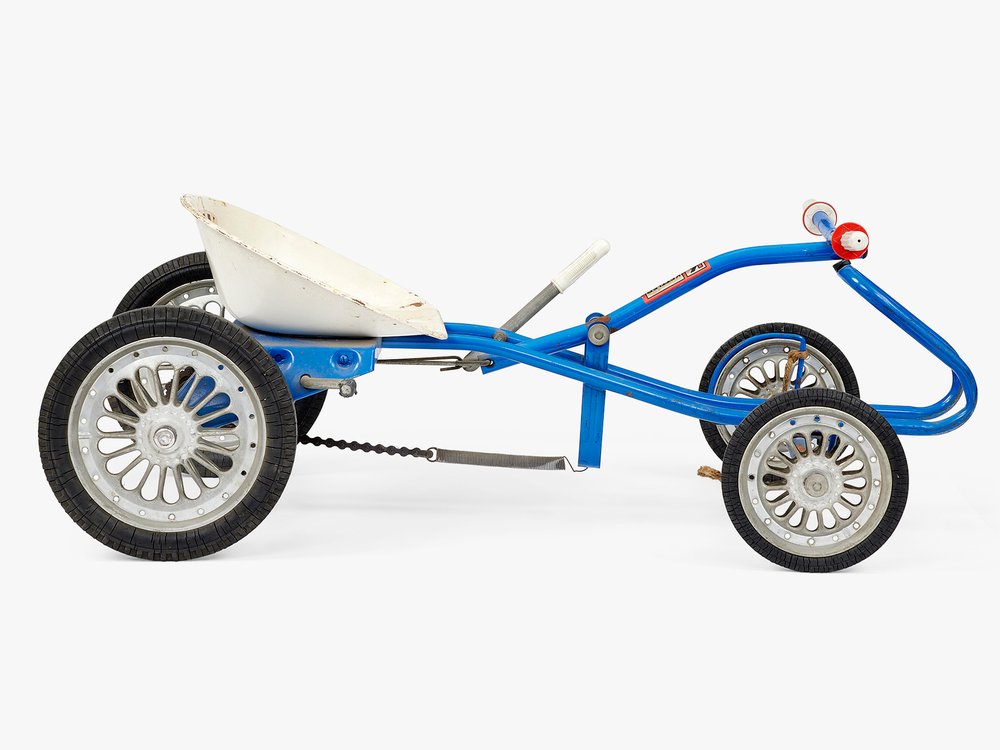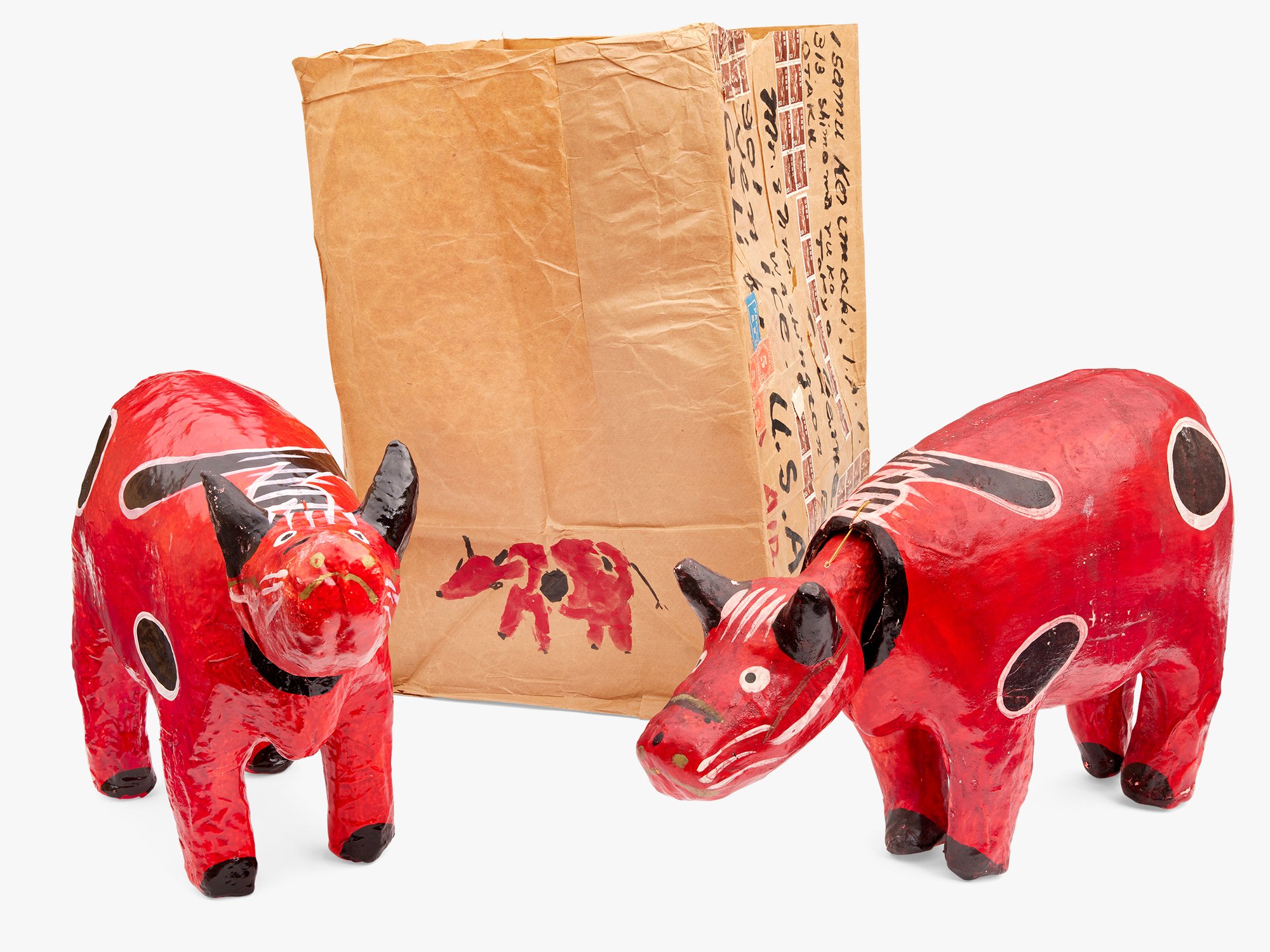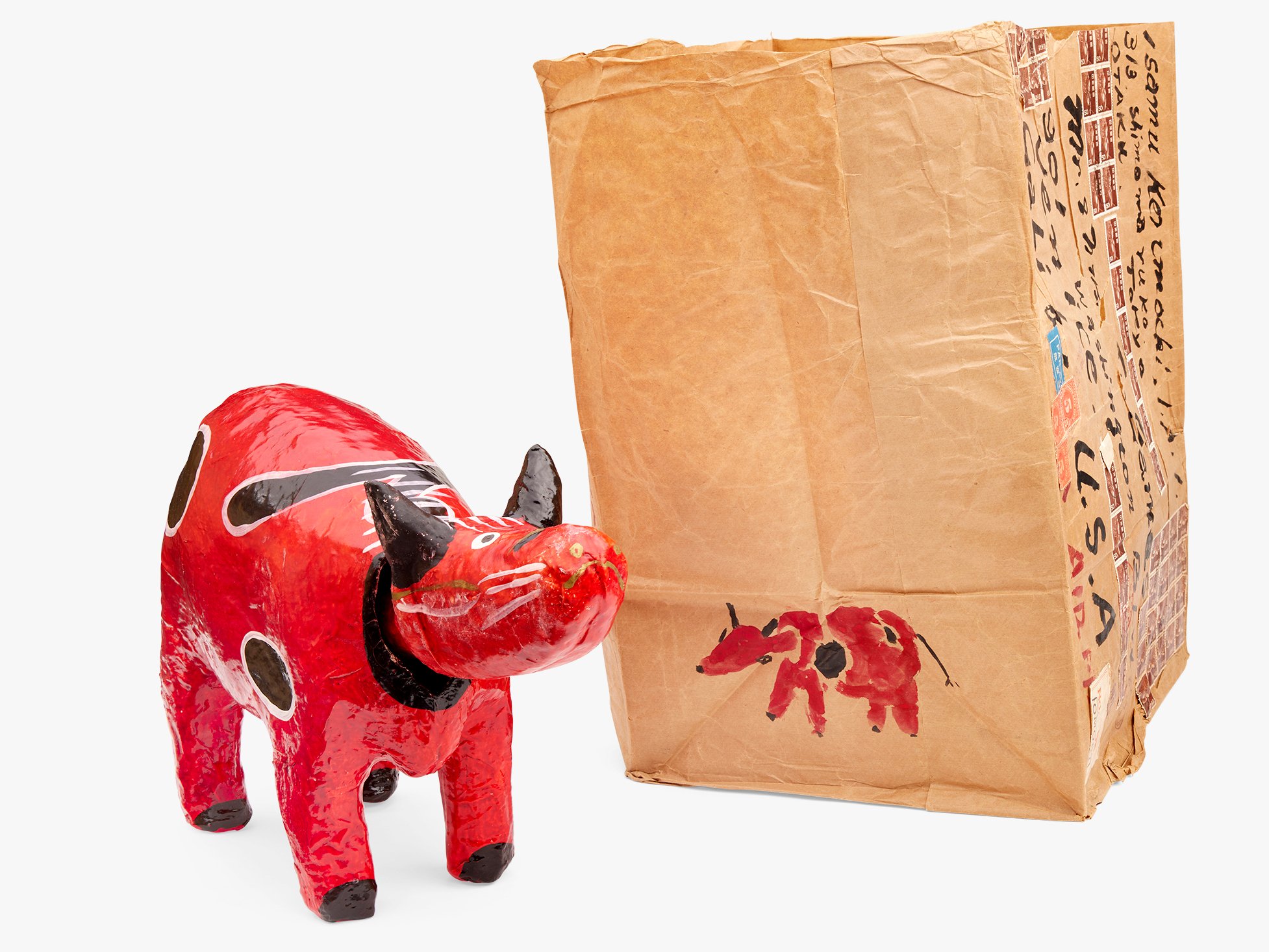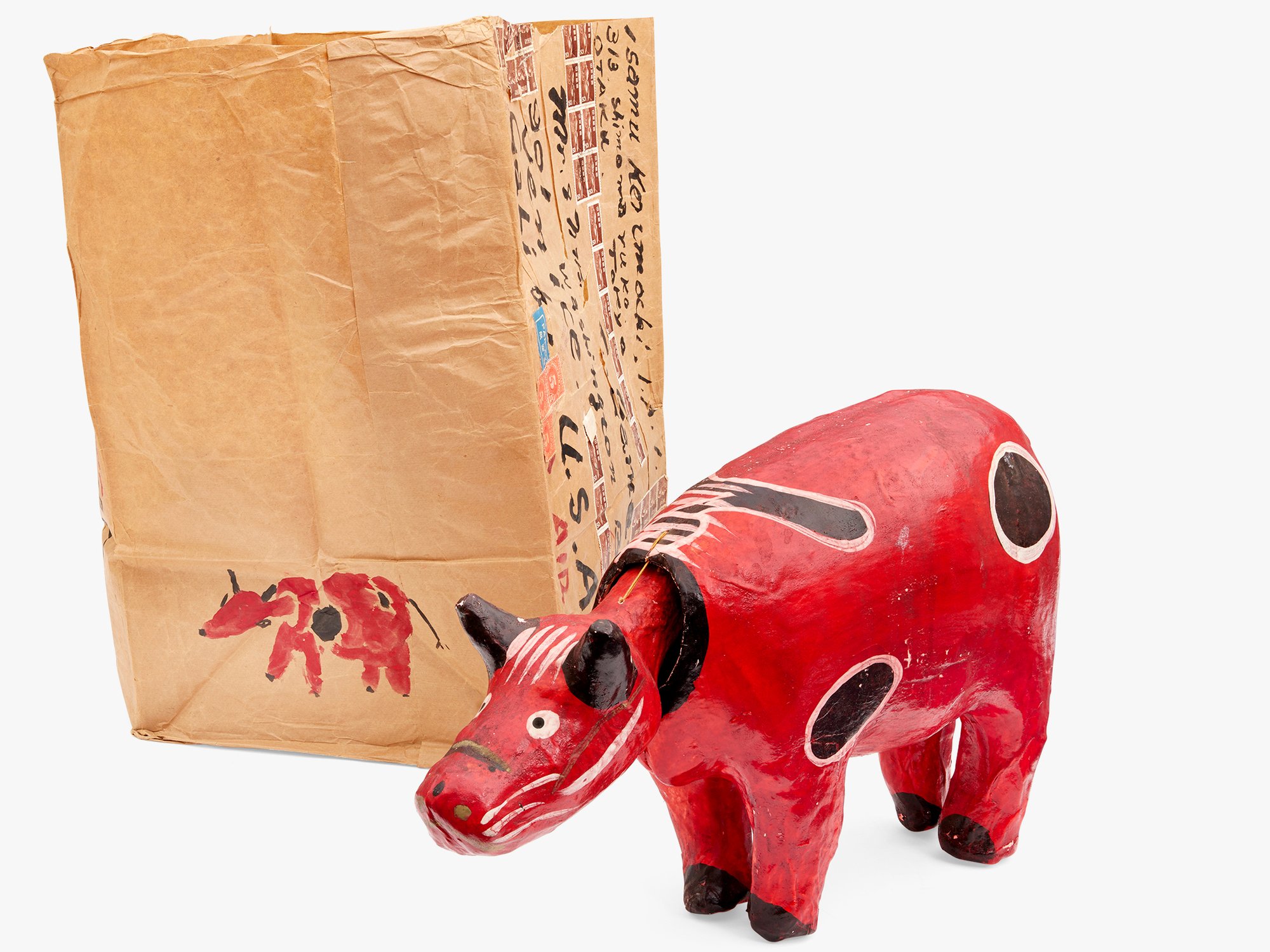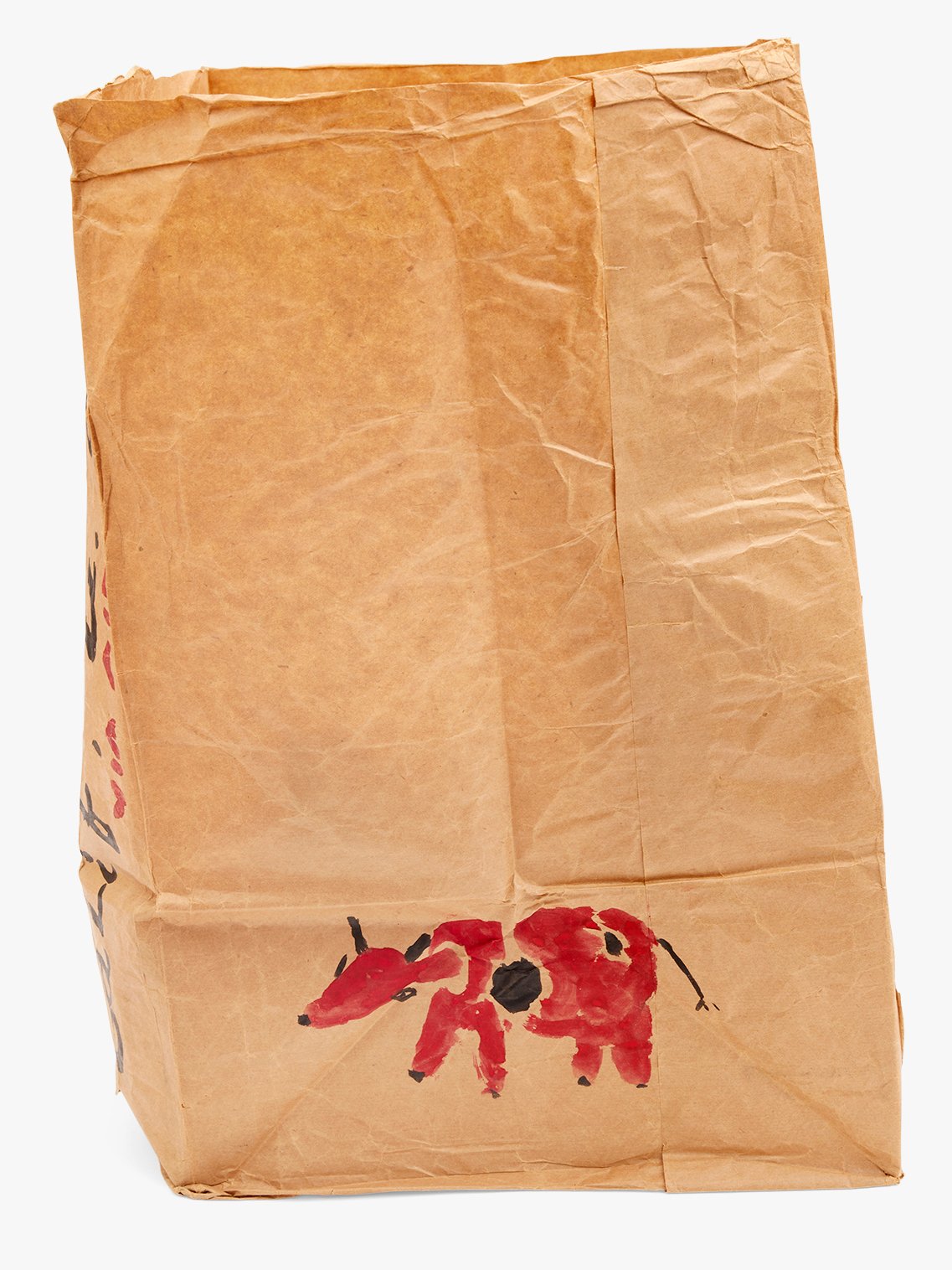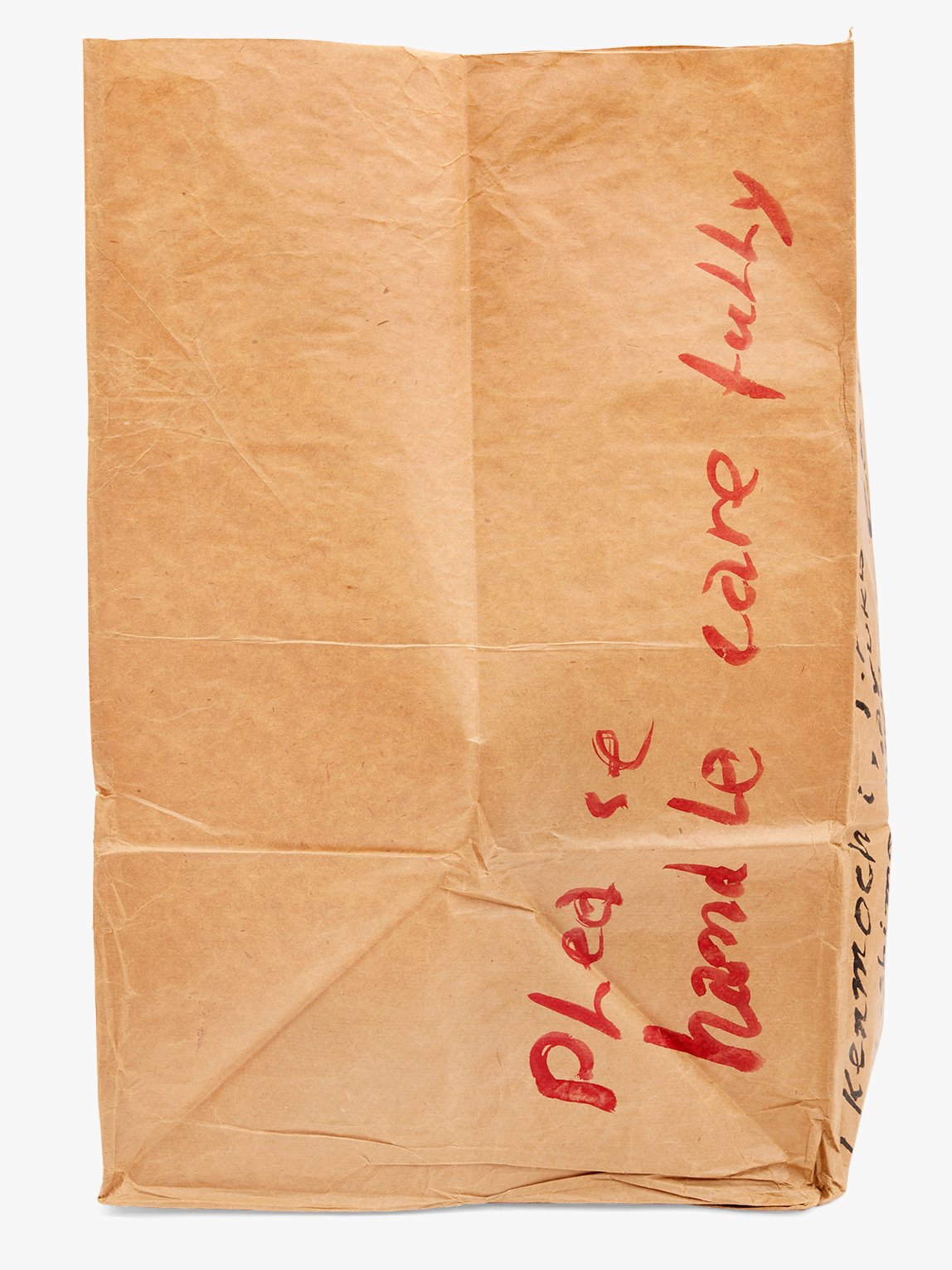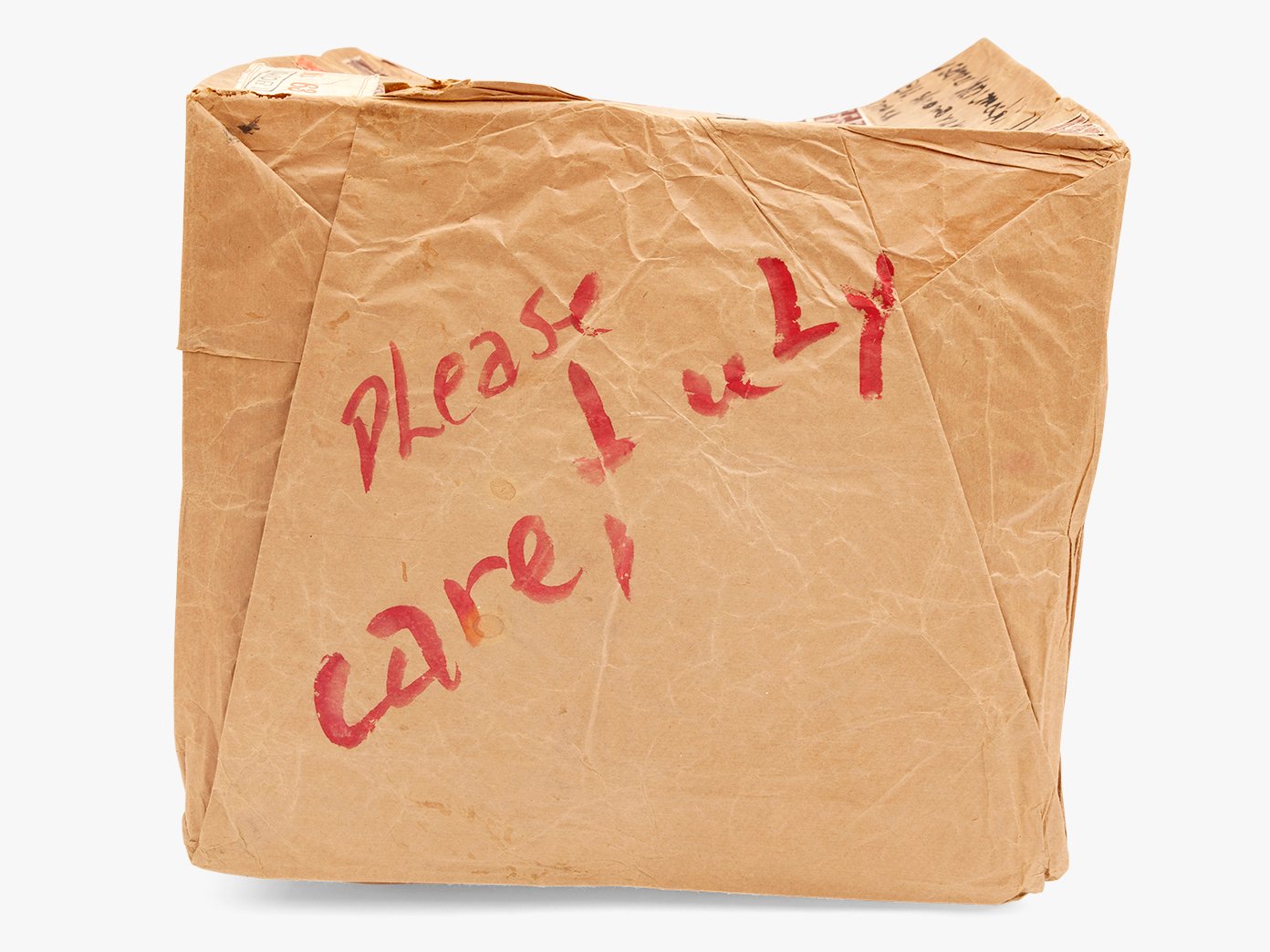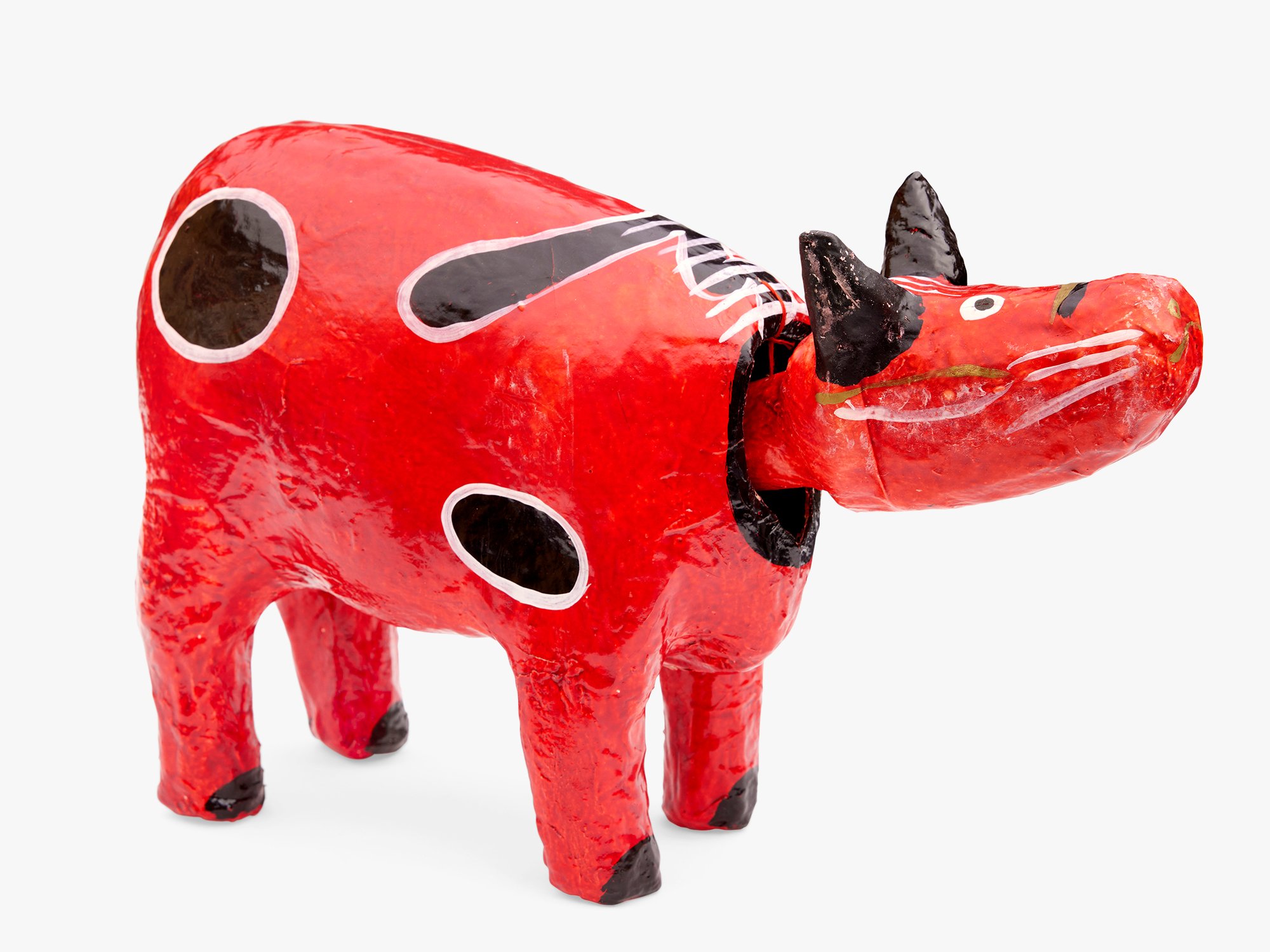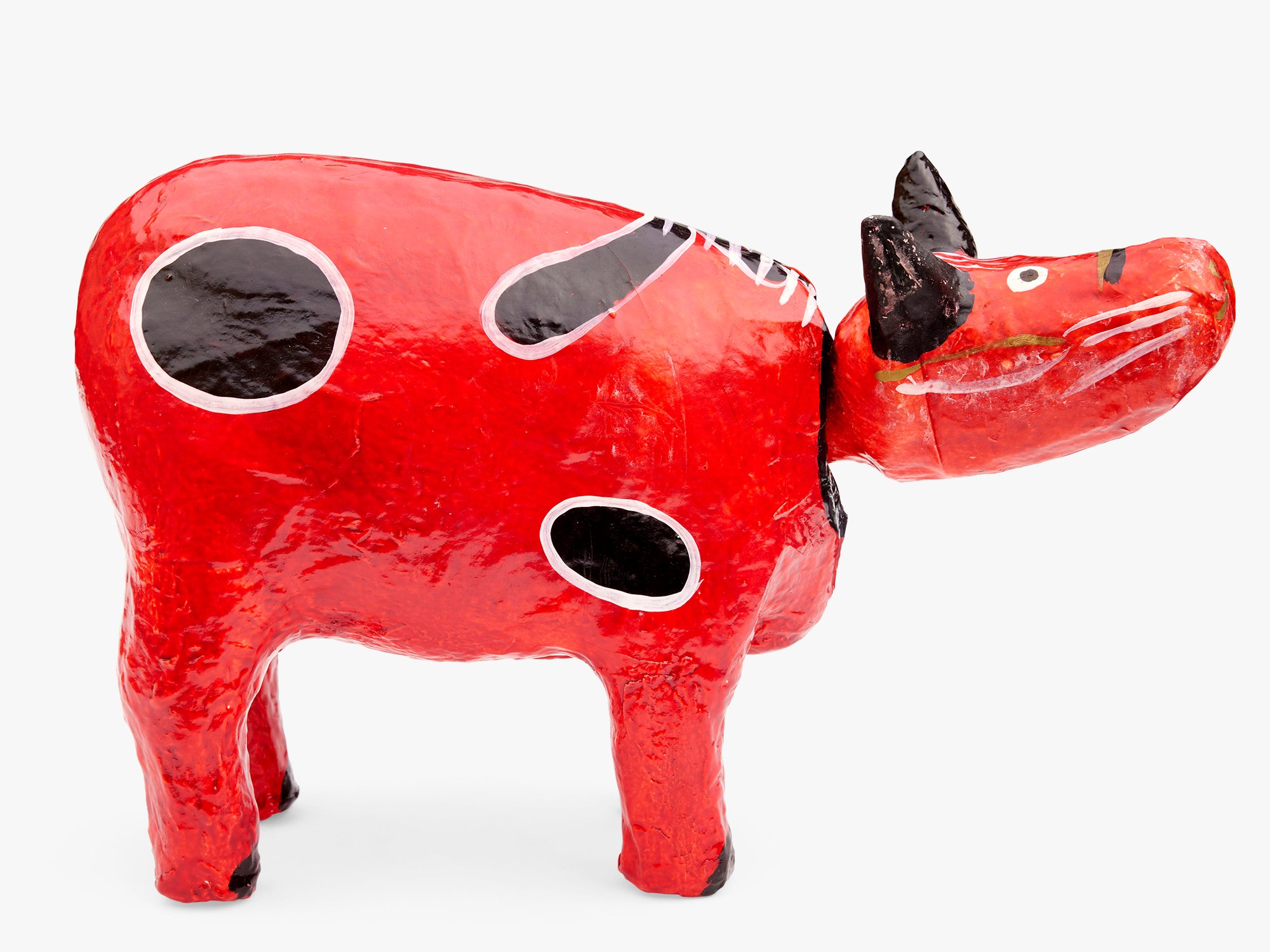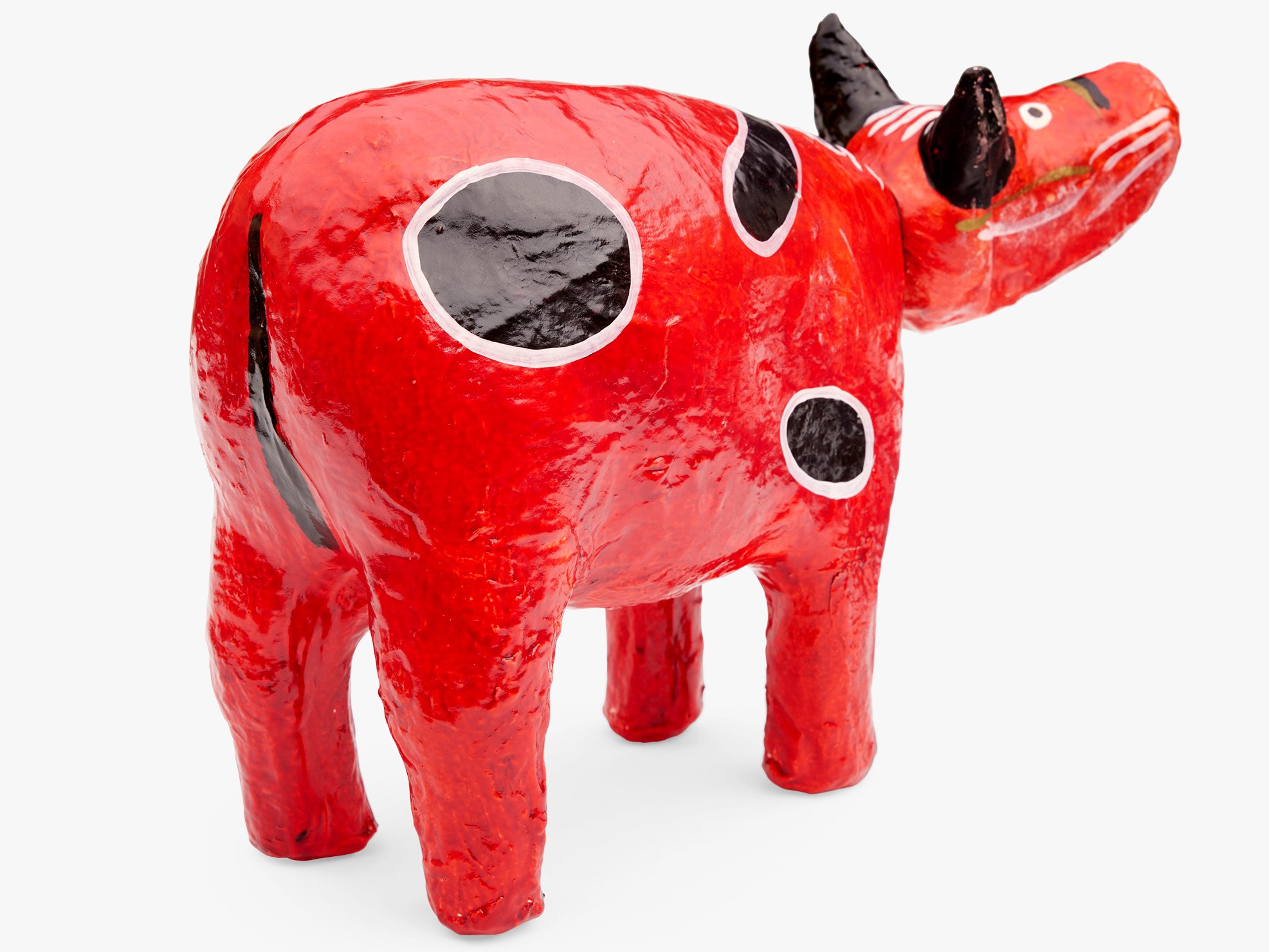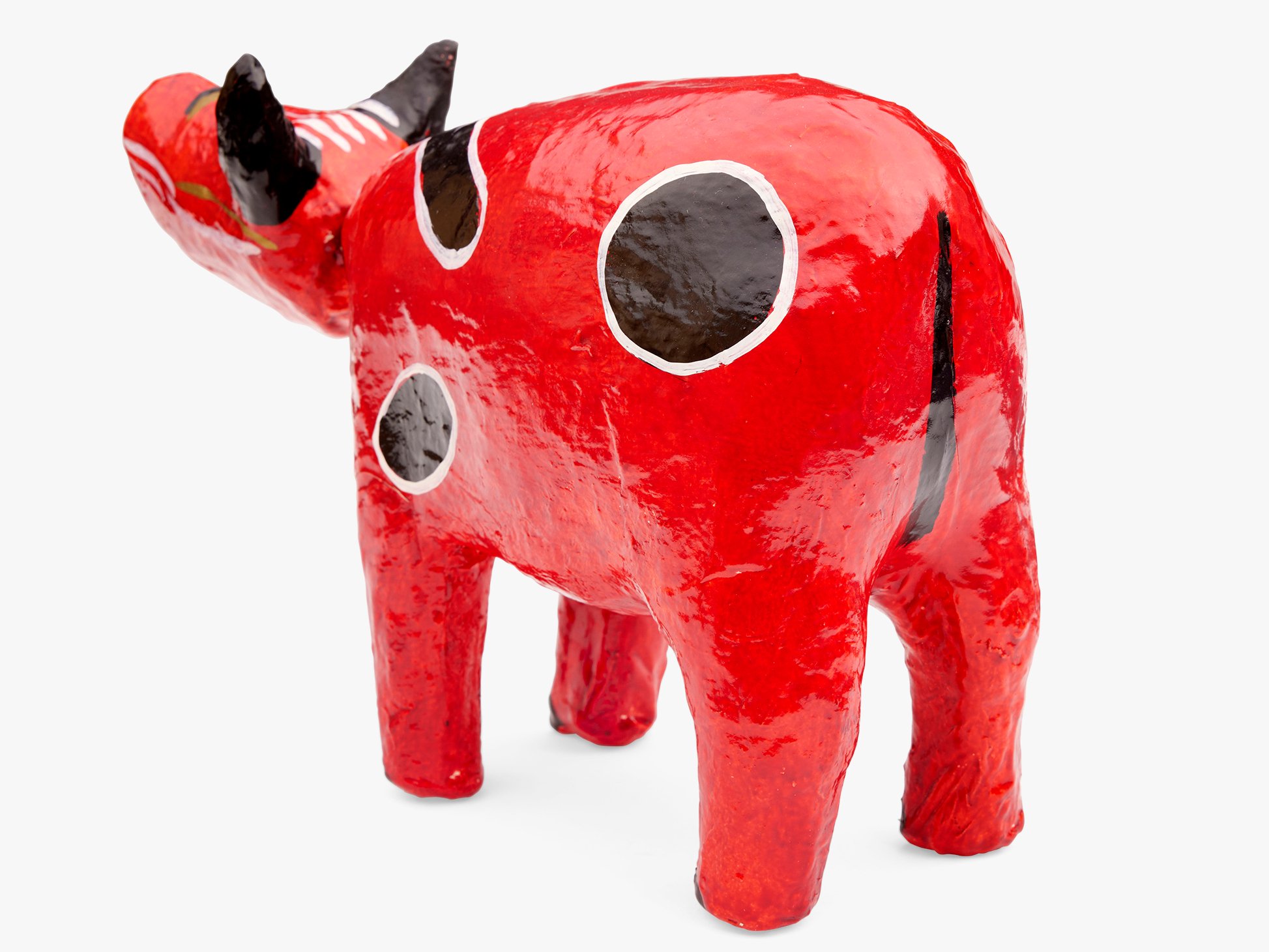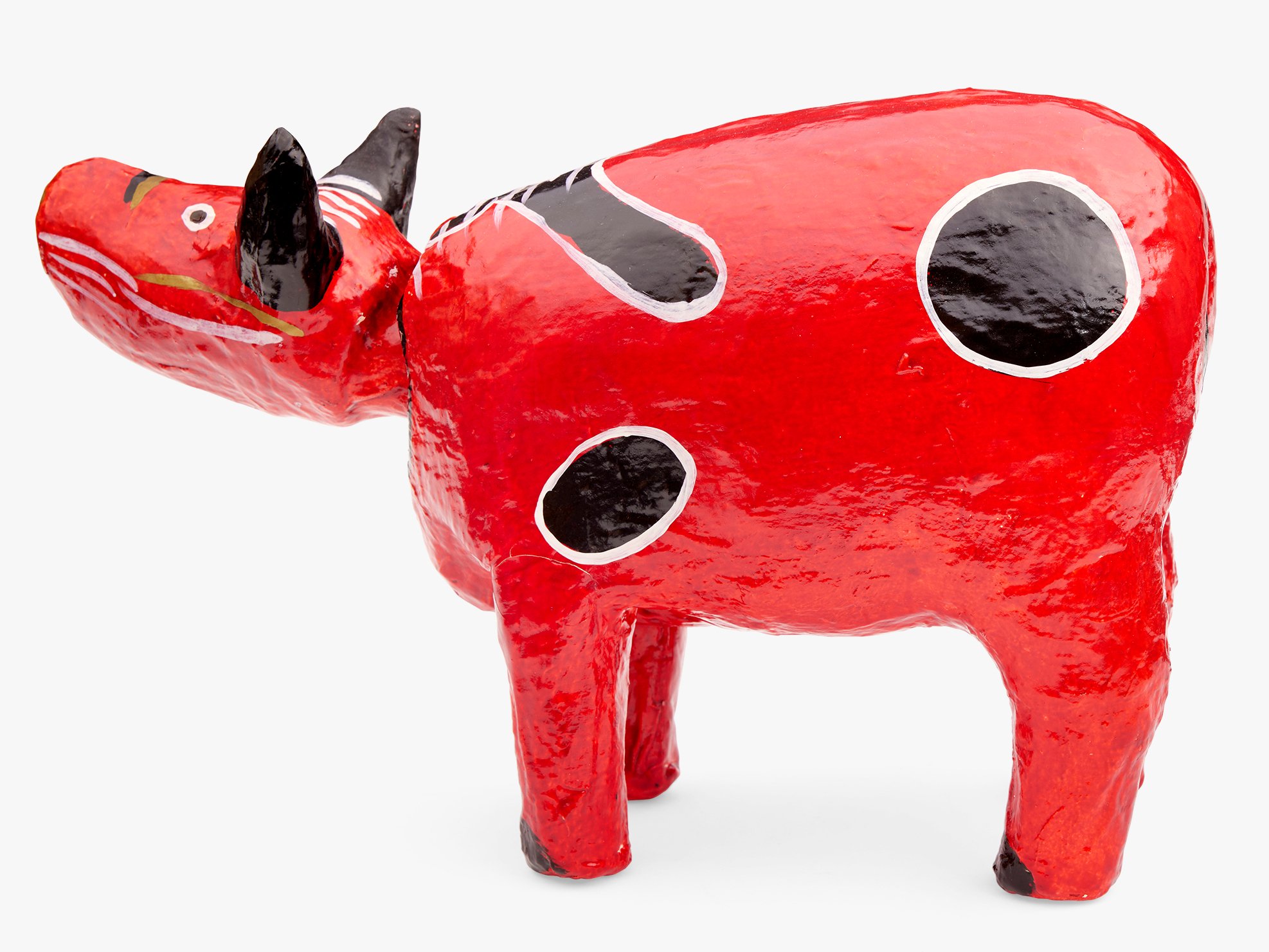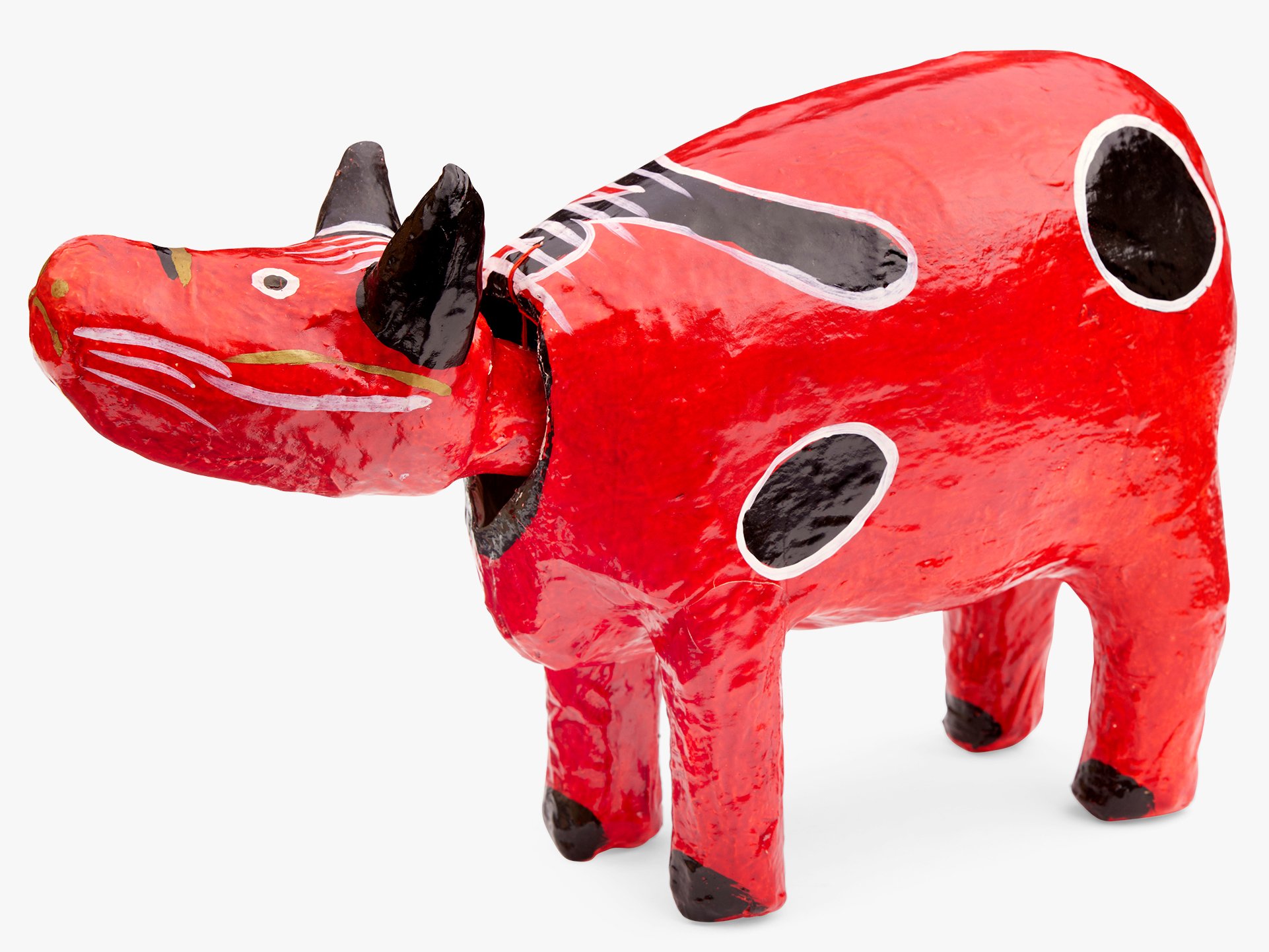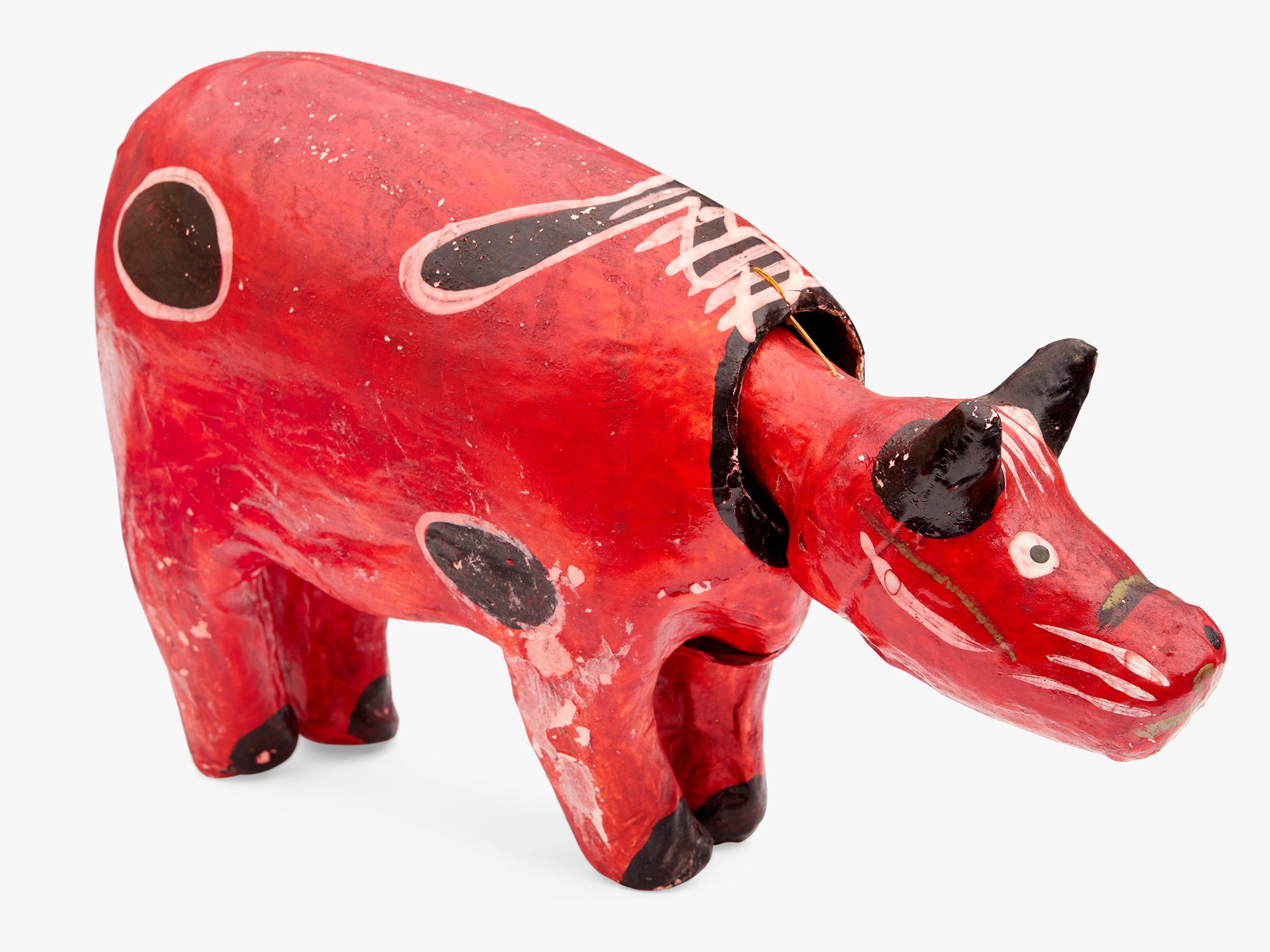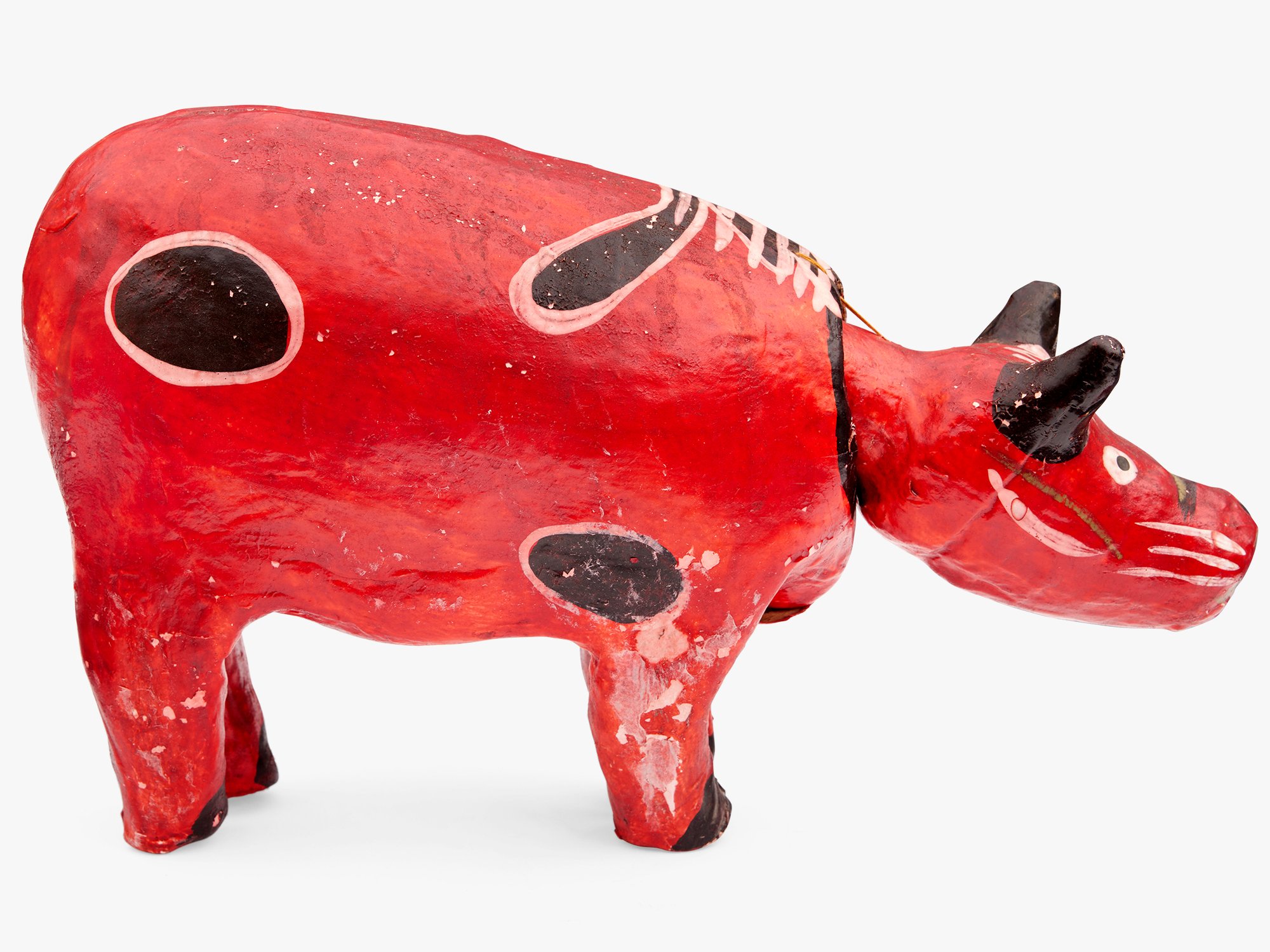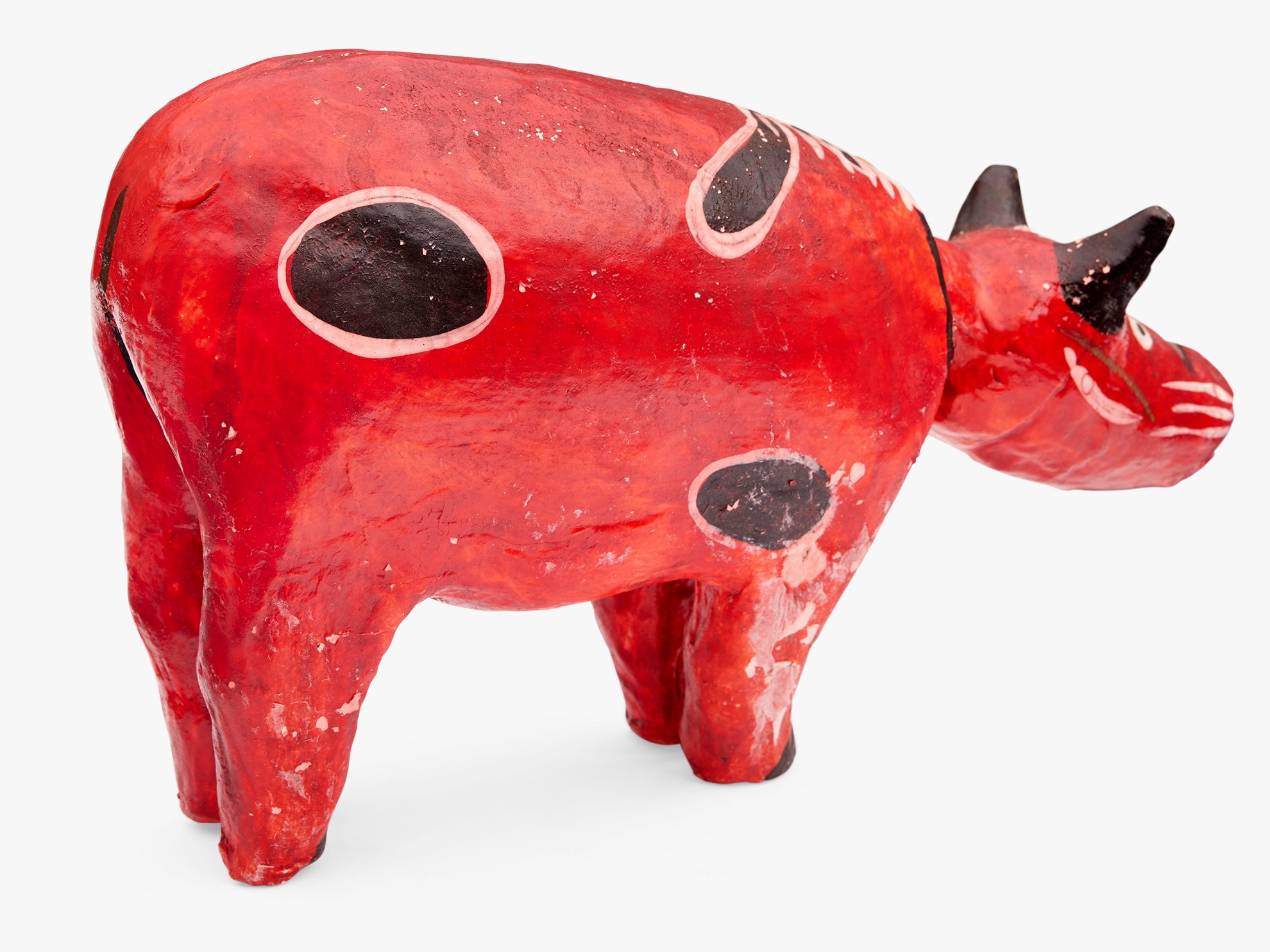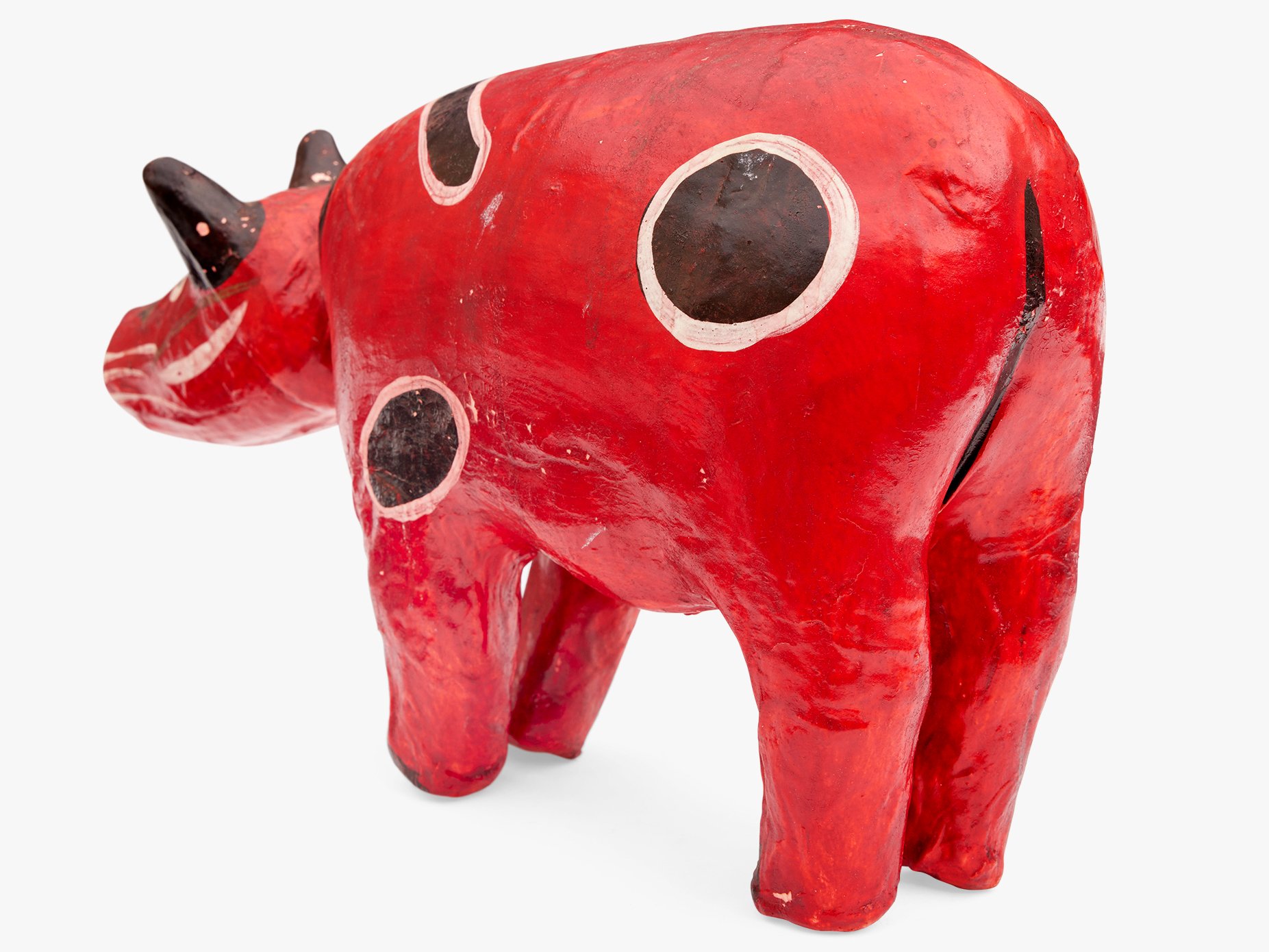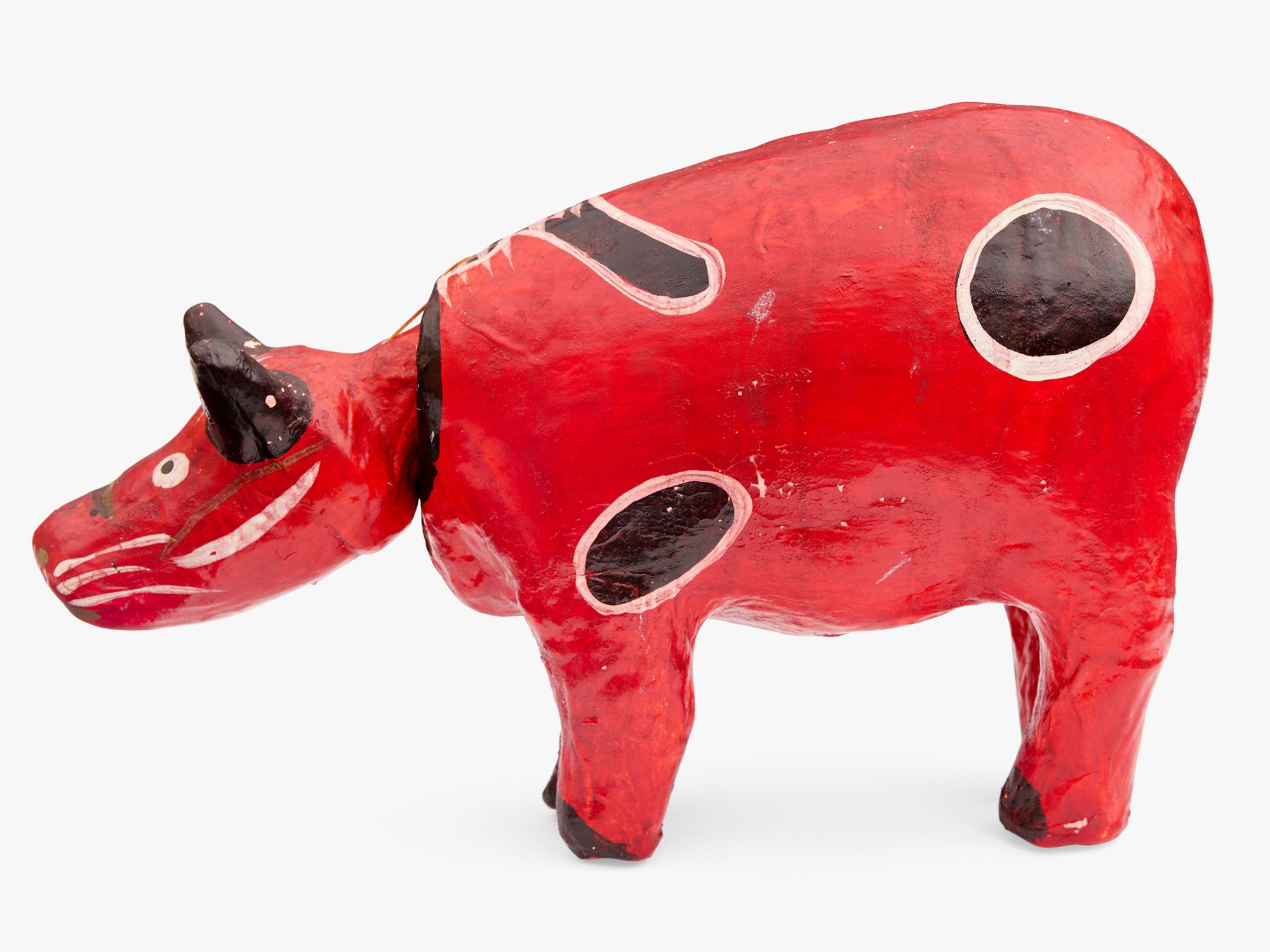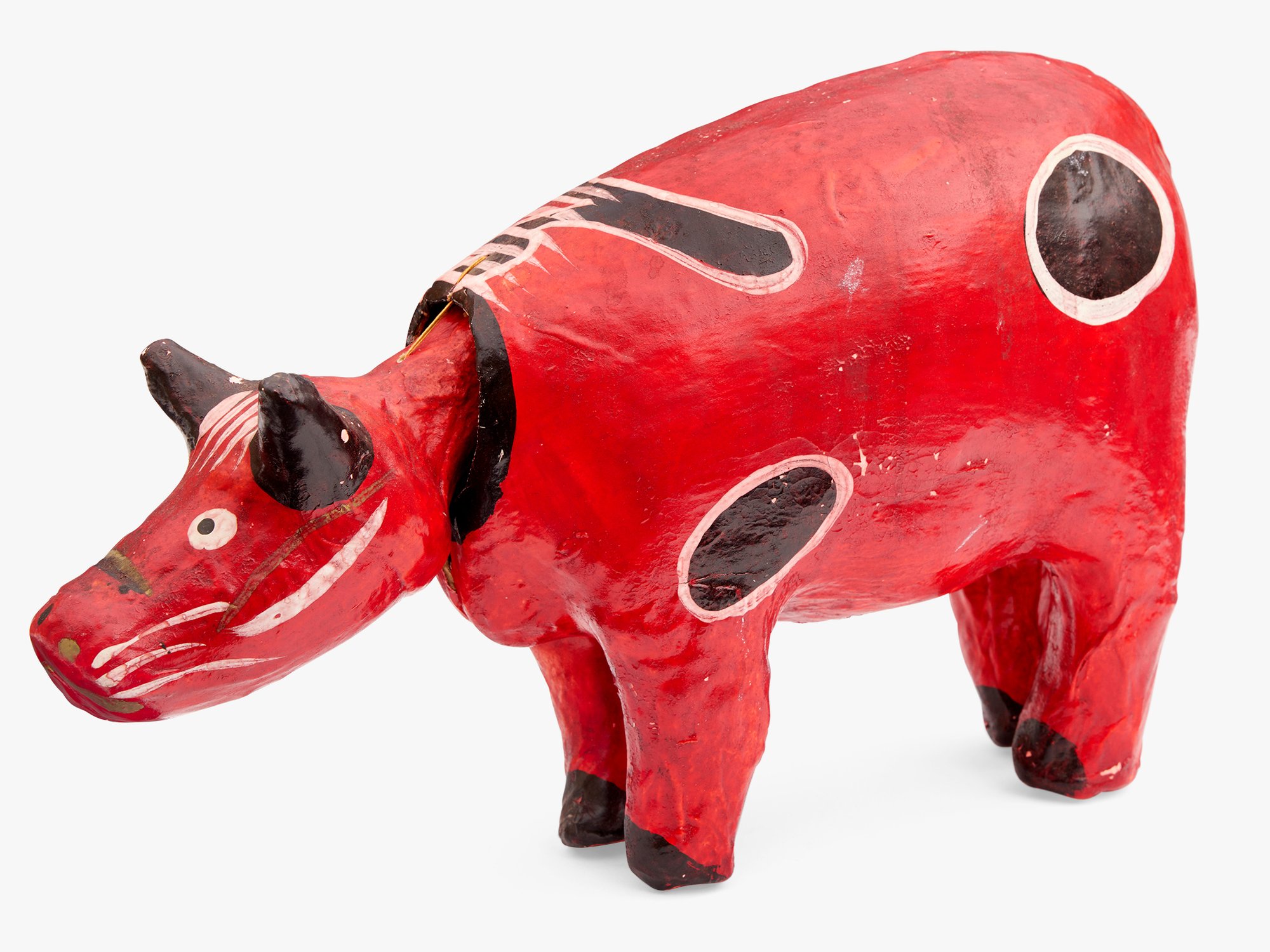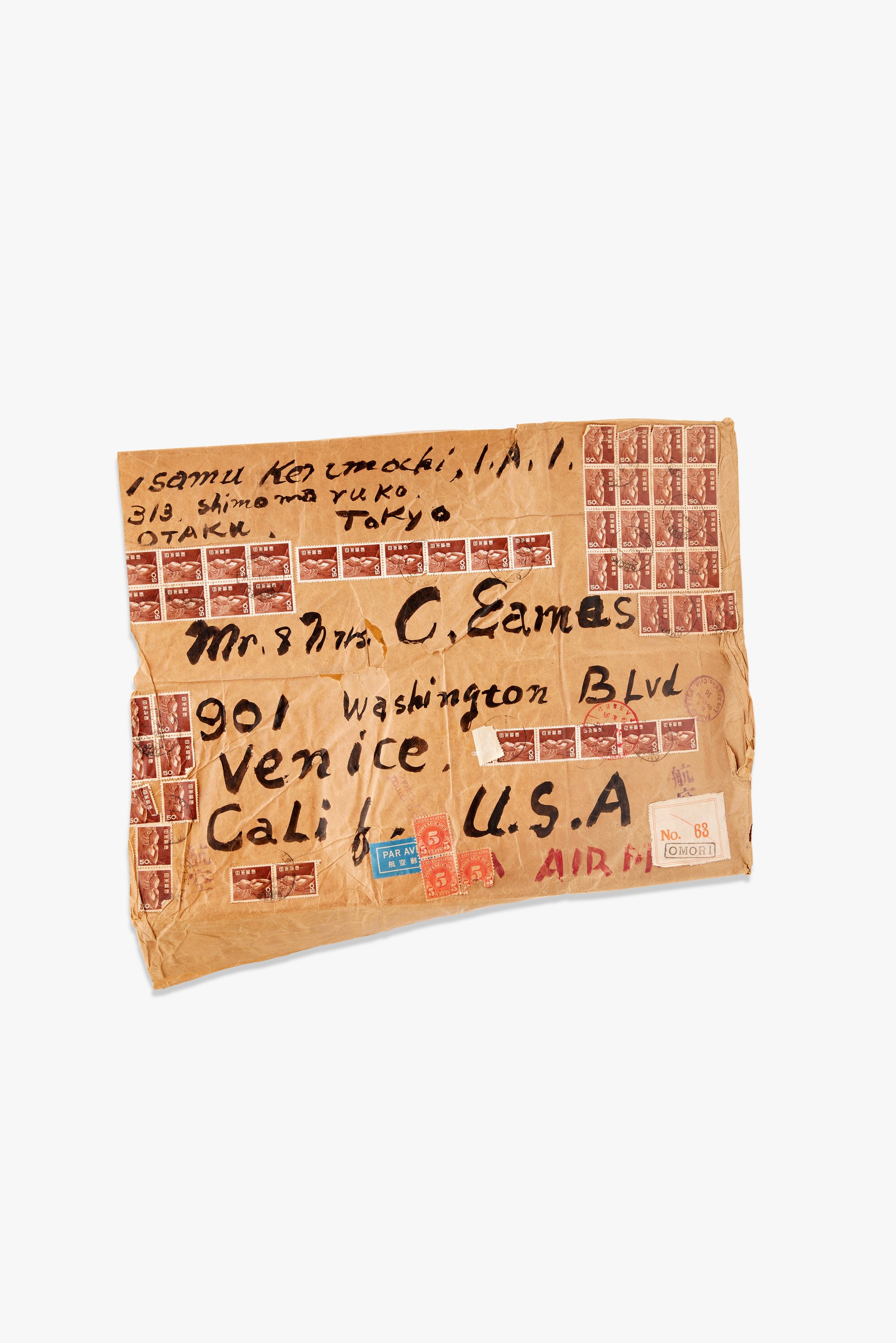Akabeko
n.d.
These matching Japanese akabeko were sent as a gift to the Eameses by designer Isamu Kenmochi. Akabeko translates to red (aka) cow (beko) and the name refers to a Japanese folktale about a cow that was used to haul materials during the construction of a Buddhist temple in the town of Yanaizu around 800 CE. They are thought to bring good fortune and can be found throughout the Fukushima Prefecture and elsewhere. The toys’ construction consists of two parts: a hollow body and a head-and-neck that is suspended from string inside the body, allowing it to bob up and down. Both elements are made from layers of papier-mâché that are formed around wooden molds. Made by a handful of family-run workshops in Japan’s Aizu region, akabeko represent craft knowledge that has been passed down for many generations.
These akabeko arrived in a package that playfully previewed its contents. In addition to the necessary addresses and the dozens of stamps required to ship the gift from Japan to California, Kenmochi painted his own renditions of the small red cow. Kenmochi was part of the first generation of industrial designers in Japan. He trained at the Tokyo College of Industrial Arts in the early 1930s and became a member of the Tokyo-based Industrial Arts Institute (IAI), which promoted industrial production throughout Japan. Kenmochi met the Eameses—as well as many other important US-based designers—when he made a seven-month-long study trip to the United States on behalf of the IAI in 1952. This thoughtful gift was likely sent to the Eameses upon Kenmochi’s return to Japan.
- Medium:Paper, paint
- Dimensions:Akabeko 1: 8 x 12 x 4 1/4 in. (20.3 x 30.5 x 10.8 cm)Akabeko 2: 8 x 13 1/4 x 4 1/2 in. (20.3 x 33.7 x 11.4 cm)Packaging: 14 1/4 x 11 x 9 1/2 in. (36.2 x 27.9 x 24.1 cm)
- Item:T.2019.2.190.2, T.2019.2.190.3, T.2019.2.190.4
